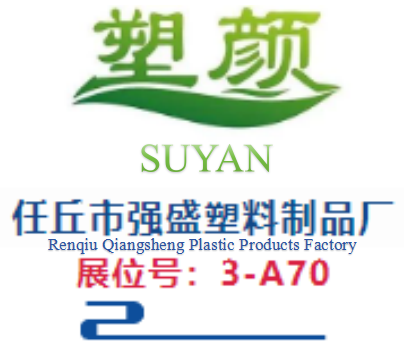If your favorite color is neutral gray-green, you’re in luck, because refrigerant cylinders are destined to lose their current kaleidoscope of colors and take on one consistent shade of gray.
The Air-Conditioning, Heating, and Refrigeration Institute (AHRI) has announced significant changes to refrigerant paint color designations in the revised version of AHRI Guideline N, “Assignment of Refrigerant Container Colors.” Revisions now specify that all refrigerant containers should assume one uniform gray-green paint color (color No. 7044 on the RAL color chart). All existing individually assigned container paint colors should be transitioned to that color by 2020.
AHRI Guideline N previously stipulated that specific paint colors be used for refrigerant containers as an additional means of refrigerant identification. However, with the increasing number of refrigerants approved for use, there was concern over the potential misidentification of similarly colored containers.
“Misidentifying refrigerants can lead to serious safety issues because refrigerants have different operating pressures and, in some cases, flammable properties,” said Maureen Beatty, executive vice president of National Refrigerants Inc. and chair of the AHRI committee that oversaw the revision. “It can also cause equipment damage if refrigerants are used in the wrong applications. Therefore, we decided the best course of action for the industry was to update the guideline to ensure that refrigerants continue to be used correctly and safely based on the required product markings and labels.”
Beatty told The NEWS the concept of adopting a uniform canister color has been deliberated for several years. The industry opted to make such a significant change in response to the plethora of new refrigerants being introduced into the marketplace.
“It’s not that you run out of colors, necessarily, but what the industry runs out of is the ability to provide a uniform look to a paint color,” Beatty said. “It has to do with variation in how cylinders get painted, which leads to variation in the look of what is supposed to be the same paint color. It’s not like going to Home Depot, where you hand them a swatch and they match it no matter what. It doesn’t work quite that easily.”
The boxes the cylinders are delivered in may still use the old colors, even if the cylinders inside are the standardized gray-green, and Beatty doesn’t anticipate any sort of mass recall.
“Anything that’s already out and packaged as of Jan. 1, 2020, won’t get repainted,” she said. “There will be a period of time where cylinders will be coming into the marketplace painted as the unified color while other people may be depleting inventories of the uniquely colored cylinders.”
Francis Dietz, AHRI’s vice president of public affairs, said AHRI worked with industry partners to survey contractors, distributors, suppliers, equipment owners, and technicians to determine if the many container colors were causing confusion. The survey found that although canister color was meant to create an easy way to identify refrigerant, more than half of its respondents said container colors had caused confusion.
Besides standardizing the canister colors, other options considered included designating QR codes for each type of refrigerant, and the QR code could be provided by AHRI. However, the guideline is optional, therefore, AHRI would not be able to address issues if manufacturers used the wrong QR codes.
Another option considered was assigning consistent colors to groups of refrigerants with similar properties, but members were concerned this approach could lead to cross contamination among grouped refrigerants.
“Therefore, members decided to choose one generic RAL paint color for all cylinders — with a red band for flammable refrigerants, which is already specified in the guideline — and to continue to assign PMS colors for printed materials only,” Dietz said. “This approach would encourage the user to rely on the refrigerant label for the refrigerant name and would also allow manufacturers to still use PMS colors in their printed marketing materials.”
The guideline really has outlived its original purpose in many ways, said Dave Burks, director of sales, Worthington Industries. When the guideline was first created, fewer primary refrigerants were being used in the industry, Burks noted.
That made it much easier to assign colors that are unique to each refrigerant, which was the original intent. With the significant number of refrigerants that have been introduced to the market and the ongoing development of new refrigerants, it’s becoming increasingly difficult to identify a unique color for each refrigerant.
“We think this change will definitely be an improvement in the guideline and the best practices in the industry by promoting responsible use practices,” Burks said. “Individuals throughout the entire supply chain who use, distribute, or package refrigerants should be focusing on the container labeling and the packaging text as the primary source of identification. This change to the guideline will really force the industry to move in that direction.”
An important aspect of this change for contractors and technicians to remember is that the cartons will not change, noted Tom Gagnon, director of sales, The Cylinder Group, North America, Amtrol Inc. Theoretically, the cylinders should stay in their cartons, and the cartons will most likely continue to use the same colors and look exactly as they do now.
“If you have an assigned color today, you can still use that on the carton in 2020 and beyond,” Gagnon said. “It’s only the cylinder that will change.”
Many manufacturers will likely incorporate a silk screen print of the refrigerant name using the old PMS color on the standardized canisters, added Gagnon.
The consensus bottom line is this change won’t necessarily make life easier or more difficult for contractors or technicians — it simply means they will have to be diligent about checking the labels on the canisters rather than relying on canister colors.
“The end thought here is that this will make it safer to use the right product rather than depending on a color,” Gagnon told The NEWS. “[Refrigerant users] will have to look at each label to ensure they have the correct refrigerant. So they won’t confuse colors anymore. Close shades of orange or blue or what have you won’t confuse users anymore. They’ll have to read the labels to ensure they’ve got the right refrigerants for the right applications.”
CONTRACTING IMPACT
Hank Bonar, president of Bonar Engineering Inc. in Jacksonville, Florida, said he wonders if relying on labeling is the best way to communicate information.
“If you were getting your luggage at the airport, and you had a bright red suitcase, you’d know right away if it were yours,” he said. “Compare that to having to bend over and read the tag on every piece of luggage. I just think easier is better.”
Bonar also questioned if such a standard would or even could be adopted internationally.
“I’ll be surprised if it’s adopted internationally, because we speak a lot of languages in this world,” Bonar said. “The color has its place compared to nomenclature.”
Kevin O’Neill, owner of O’Neill Air Conditioning and Heating in Myrtle Beach, South Carolina, believes this change is only going to make the identification process more difficult.
“I think this change will make it easier for technicians to make a mistake,” he said. “You’re going to have more people putting the wrong refrigerant into systems by accident and then having to take it all out again. It’s going to increase time on the job and cost, and I don’t think this rule is going to make things any better. If it ain’t broke, don’t fix it.”
“Right now, I deal with four different kinds of refrigerants — R-410A, which is pink; R-22, which is green; R-407C, which is brownish orange; and MO-99, which is blue,” O’Neill said. “It’s a very simple system, and it works.”
O’Neill acknowledged the issue might be different for refrigeration contractors, who likely deal with a greater number of refrigerants. But he still doesn’t like the change.
“Most of the people working with refrigerants are doing comfort cooling,” he said. “Refrigeration is an important part of the market, but it’s the smallest part. I don’t think they should make the rules based on the minority rather than the majority.”
Steve Sanders, CEO of Tempo Inc. in Dallas, said he can find reasonable rationale for the standardization of color on refrigerant cylinders and can make a reasonable argument in support of the new AHRI Guideline N. However, he also finds reasonable rationale to not change.
“In either case, the incorrect refrigerant will be put into systems at times,” he said. “I do not wish to hazard a guess as to which will have a worse outcome.”
Saunders speculated that perhaps less color on cylinders might not be the best solution and, in fact, a better plan might be to use more design rather than less.
“I would allow the marketplace some opportunity to address the issues and concerns with design,” he said. “Instead of just a monochromatic paint, I would like to see companies add design elements on the canisters that more clearly differentiates one refrigerant from another. That could serve both purposes with one action. And there would be no limits to the number, quality, and variation of the paint designs.”
SIDEBAR: Distributors Expect Process Changes
Jon Melchi, vice president of government affairs and business development, Heating Air-conditioning & Refrigeration Distributors International (HARDI), said the organization understands why there would be a move to a standardized cylinder color, but noted the change will require a sharp learning curve.
“As with any change, this doesn’t come without risk,” Melchi said. “We feel, as an industry, there needs to be a very strong commitment to educating all parties — contractors, distributors, and end-users — on when these changes are going into effect, what they mean, and the need to really focus on the label. If not executed properly, this has the potential to increase [refrigerant mixing],” he said.
Melchi noted the change will require some organizations to change their processes.
“It will be imperative for distributors to double- and triple-check where refrigerants are stocked and pulled from within a warehouse, which could slow down some internal processes,” he said. “Having said that, we’re getting to so many refrigerants in so many color variations that this is an understandable step. Once again, the channels will have to make an extraordinary effort to educate all parties about these changes.”
SIDEBAR: What the Codes Say
The U.S. Code of Federal Regulations (CFR) Title 49 for hazmat transportation regulations and CFR Title 29 for occupational safety and health regulations require that all hazardous material containers, including refrigerant cylinders and drums, be properly labeled to clearly identify the contents. These container labels and markings should always be used as the primary means to identify the type of refrigerant in a container. While Air-Conditioning, Heating, and Refrigeration Institute (AHRI) guidelines serve as recommendations for the industry and are not required by law, most industry members use Guideline N. All refrigerant users should be aware that the label serves as the primary means of positively identifying the type of refrigerant in a cylinder or drum.
AHRI will continue to assign individual PMS ink colors for printed materials only, including the product label on containers and container cartons. The guideline already requires that all flammable refrigerants include a red band on top of the container.
























